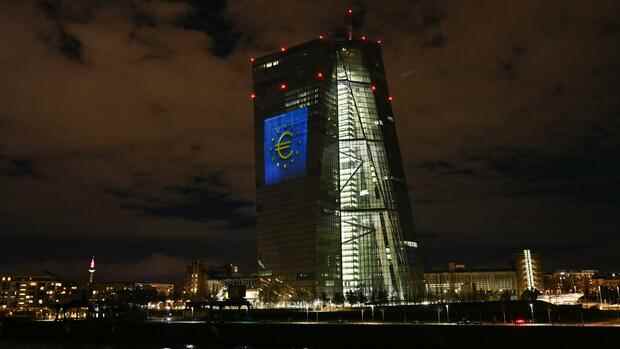The European Central Bank sees an inflation rate of two percent as the ideal mark for the euro area.
(Photo: dpa)
Frankfurt Consumer prices in the euro zone are down in December 5.0 percent increased compared to the previous year. The European statistics agency Eurostat announced on Friday morning based on a preliminary estimate. This is the highest level since the beginning of monetary union. Economists had expected a slight decline. In November the rate of price increase was 4.9 percent.
The value is thus above the target of two percent that the European Central Bank (ECB) is striving for in the medium term for the euro area. The central bank recently raised its inflation forecast for this year significantly. However, she continues to assume that the current price surge is a temporary phenomenon.
The strongest price driver in December was again energy, even if it rose slightly less at the end of the year at 26.0 percent than in November at 27.5 percent. Adjusted for particularly volatile energy and food prices, core inflation was 2.6 percent. Food, alcohol and tobacco cost 3.2 percent more than in December 2020. Industrial goods (excluding energy) rose by 2.9 percent, and services by 2.4 percent.
The ECB attributes the price increase mainly to special factors caused by the pandemic. These include base effects such as the oil price. This collapsed at the beginning of the 2020 corona pandemic, so the values from 2021 are correspondingly higher than the low values from the previous year.
Top jobs of the day
Find the best jobs now and
be notified by email.
Other factors are the current supply bottlenecks and the withdrawal of the VAT cut from the second half of 2020. Critics, on the other hand, warn of the dangers of inflation and call for monetary policy to be tightened more quickly.
“The last data point from last year did not bring the slowdown in price growth expected in the expert survey,” said KfW’s chief economist, Fritzi Köhler-Geib, on the figures. She expects the inflation rate to fall again this year due to the elimination of special effects. How quickly this happens, however, depends on overcoming the delivery bottlenecks and the energy prices.
From their point of view, the Omikron variant makes new disruptions in the supply chains more likely. If there is no noticeable downward trend in the inflation rate, the pressure on employees to strive for higher wage agreements will increase and with it the risk of so-called second-round effects, in which higher prices and wages mutually reinforce one another. “It is therefore crucial that the ECB keeps a close eye on this development and clearly and reliably communicates the prospects for a turnaround in interest rates in the light of further inflation developments,” says Köhler-Geib.
Warnings within the Governing Council
Commerzbank economist Christoph Weil expects that it will take until autumn for inflation in the euro area to fall below two percent again. “The calls for an end to the ultra-expansionary monetary policy will therefore not be silenced anytime soon.”
Also within the Governing Council there have recently been warnings of persistently high inflation. The central bank’s decision-making body decided in December to end the bond purchases via the PEPP pandemic emergency program at the end of March. In return, however, the older APP bond purchase program is to be increased to 40 billion euros a month from April. The volume is expected to drop to 20 billion euros per month by October.
Since an end to bond purchases is a prerequisite for an interest rate hike, an early turnaround in interest rates in the euro area is very unlikely. That had sparked debate at the December Council meeting. Individual council members, including the then Bundesbank President Jens Weidmann, had campaigned for the ECB to emphasize the dangers of inflation and not commit itself to a very loose monetary policy for too long.
More: Will inflation stay high? These eight graphics show the arguments for and against.

